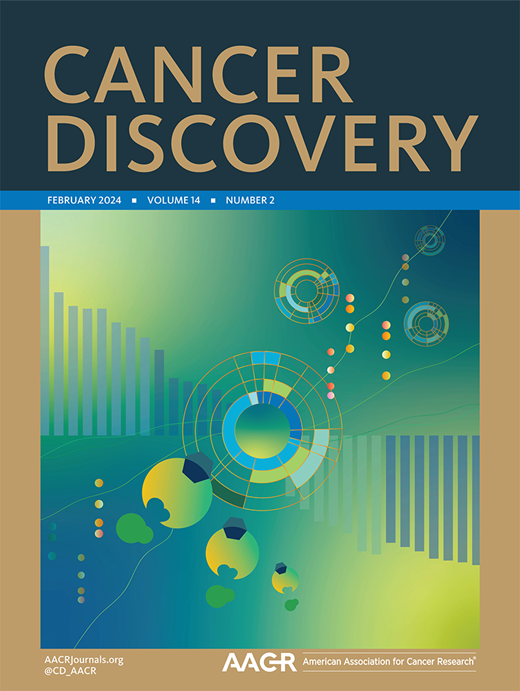侵袭性透明细胞肾细胞癌中PTHrP和副肿瘤性高钙血症的hif -2依赖性调节。
IF 33.3
1区 医学
Q1 ONCOLOGY
引用次数: 0
摘要
肾细胞癌(RCC)合并高钙血症(HC)患者预后较差。HC常涉及PTHrP, HIF-2的作用尚不完全清楚。利用以肿瘤细胞自主炎症/免疫特征为特征的HC的RCC肿瘤移植(TG)模型,我们发现PT2399抑制HIF-2经常使钙正常化,下调循环PTHrP并减少HIF-2与PTHLH (PTHrP)启动子的结合。可能在hif -2依赖性肿瘤的一个亚群中选择性诱导PTHrP, PTHLH位点通常在TG(HC)中更容易获得。然而,PTHLH染色质可及性不受PT2399的影响,不像其他地方(包括副肿瘤性红细胞增多症的TG中的EPO位点)。与TGs一样,患者的副肿瘤HC与透明细胞(cc)RCC(和肉瘤样/横纹肌样分化)相关,并通过PT2977/belzutifan迅速纠正,与双磷酸盐不同,PT2977/belzutifan下调PTHrP。我们的数据支持评估HIF-2拮抗剂对ccRCC伴副肿瘤HC患者的疗效,HIF-2拮抗剂可能作为一种预测性生物标志物。本文章由计算机程序翻译,如有差异,请以英文原文为准。
HIF-2-dependent Regulation of PTHrP and Paraneoplastic Hypercalcemia in Aggressive Clear Cell Renal Cell Carcinoma.
Renal cell carcinoma (RCC) patients with hypercalcemia (HC) have worse outcomes. HC often involves PTHrP, and the role of HIF-2 is incompletely understood. Leveraging RCC tumorgraft (TG) models of HC, which were characterized by tumor cell autonomous inflamatory/immune signatures, we show that HIF-2 inhibition with PT2399 frequently normalized calcium, downregulated circulating PTHrP and reduced HIF-2 binding to the PTHLH (PTHrP) promoter. Likely contributing to the selective induction of PTHrP in a subset of HIF-2-dependent tumors, the PTHLH locus was generally more accessible in TG(HC). However, PTHLH chromatin accessibility was grossly unaffected by PT2399, unlike elsewhere (including EPO locus in a TG with paraneoplastic polycythemia). As in TGs, paraneoplastic HC in patients was associated with clear cell (cc)RCC (and sarcomatoid/rhabdoid differentiation) and was rapidly corrected by PT2977/belzutifan, which unlike bisphosphonates, downregulated PTHrP. Our data supports evaluating HIF-2 antagonists for ccRCC patients with paraneoplastic HC, which may serve as a predictive biomarker.
求助全文
通过发布文献求助,成功后即可免费获取论文全文。
去求助
来源期刊

Cancer discovery
ONCOLOGY-
CiteScore
22.90
自引率
1.40%
发文量
838
审稿时长
6-12 weeks
期刊介绍:
Cancer Discovery publishes high-impact, peer-reviewed articles detailing significant advances in both research and clinical trials. Serving as a premier cancer information resource, the journal also features Review Articles, Perspectives, Commentaries, News stories, and Research Watch summaries to keep readers abreast of the latest findings in the field. Covering a wide range of topics, from laboratory research to clinical trials and epidemiologic studies, Cancer Discovery spans the entire spectrum of cancer research and medicine.
 求助内容:
求助内容: 应助结果提醒方式:
应助结果提醒方式:


